Introduction
Many individuals in the emerging modern world may exchange their information on many platforms, particularly the Internet. Names, addresses, and email addresses are examples of private information. While this information is critical to your organization, the individuals who submit it to you may want to know that they are protected. As a result, the European Union created a data protection legislation in 2018 with the general data protection regulation, abbreviated GDPR.

This rule requires any platform that collects people's personal information to provide GDPR-compliant services. Among these platforms are online form builders. Form builder sites, particularly registration forms, retain a lot of people's information; in such circumstances, GDPR is essential.
GDPR is the European Union's policy for protecting individuals' personal information. GDPR-compliant form builder, on the other hand, is a tool that modifies their privacy policies in accordance with all the GDPR laws and regulations. As a result, if you employ GDPR-compliant form builders, you won't have to worry about fines or other penalties. If you want to create lead-generating forms, for example, you should choose a form builder that is GDPR-compliant.

Furthermore, each individual should be aware of how their data is processed, kept, and shared with other parties. As a result, you should create a GDPR compliance checklist and ensure that form builders have taken the essential privacy safeguards. Furthermore, if you intend to utilize forms in your organization, you should pay close attention to these rules and regulations.
This post will explain why GDPR is important and why you should use a GDPR-compliant form builder when designing forms.
What is the General Data Protection Regulation (GDPR)?
The GDPR is the outcome of the European Union's (EU) bold data protection legislation. To safeguard people's rights, strong privacy requirements went into force on May 25, 2018. This cybersecurity framework intends to secure the personal data of all European Union citizens.

The GDPR modernizes the 1950 European Convention on Human Rights for the digital age. According to Article 8 of the Convention States, everyone has the right to respect their private family life. The distinction between public and private life was clear in the analog age that gave rise to this essay. They are now confusing and fuzzy. Customers may never be convinced that their private data, and hence their private lives, are being protected in the absence of a defined and enforced norm such as the GDPR.
In addition to the GDPR's risk-mitigation measures, the Prudential Regulation Authority specifies its third-party risk management guidelines in Supervisory Statement SS2/21.
What are GDPR Compliance Forms?
The GDPR (General Data Protection Regulation) Form is a document or a set of documents that are used by companies to ensure compliance with the European Union's General Data Protection Regulation. The GDPR is a comprehensive data protection law that governs how companies collect, process, store, and share the personal data of EU citizens. The GDPR Form typically includes information about the data being collected, the purpose of the data collection, how the data will be used and stored, and the individual's rights under the GDPR. It is a legal requirement for companies that process the personal data of EU citizens to have a GDPR Form in place.

The GDPR form is designed to ensure that companies processing the personal data of EU citizens are compliant with the GDPR regulation. The form typically includes information about the data being collected, the purpose of the data collection, how the data will be used and stored, and the individual's rights under the GDPR.
The GDPR form benefits both the data subjects (individuals whose personal data is being collected) and the data controllers (companies collecting and processing personal data). For data subjects, the GDPR form provides transparency and clarity about how their personal data will be used and processed, and their rights under the GDPR. For data controllers, the GDPR form helps them to ensure compliance with the GDPR regulation and avoid potential fines and legal penalties. Overall, the GDPR form helps to promote transparency and accountability in the processing of personal data.
Who does the GDPR apply to?
The GDPR affects any firm that provides products and services to EU citizens. This covers entities based outside of the EU. If you do business online, you never know for sure whether the persons you deal with are from the EU. As a result, all online firms should be GDPR-compliant as a precautionary step. Personal data is divided into two categories: those who control it and those who process it (controllers vs. processors).
A) Data Processors
Any individual, governmental authority, agency, or other organization that processes personal data on behalf of a controller is defined by the GDPR. Processors do not make judgments about how personal data is processed since they follow the data processing regulations established by the controller.

A software business, for example, employs a marketer for an upcoming email campaign. All leads' names and email addresses are sent to the marketer, so that customized cold emails may be sent to each one. Because it chooses how the data should be treated, the software business is classed as the controller of personal data. The marketer is designated as a "processor" since they carry out the data processing instructions of the software business. Even if procedures follow controlled instructions, they still need to be GDPR compliant since they handle personal data.
B) Data Controllers
A controller is defined under the GDPR as any individual, public authority, agency, or other organization that determines the purpose and processing of personal data. Controllers make decisions about how personal data is processed.

A music school, for example, employs a digital screen to tell parents in the waiting area when each teacher is available. Each child's name and the room number of their music lesson are displayed on the screen. Since it selects how the notification system should process all of the data, the music school is classed as the "controller" of personal data.
Collecting Consent with Online Form
Consent from your users is an essential prerequisite for GDPR compliance. Consent must be provided freely, informedly, specifically, and unambiguously. People cannot be compelled to agree or be uninformed that they are giving permission for their data to be used. This implies you must be extremely explicit about why you are collecting information and how it will be utilized.
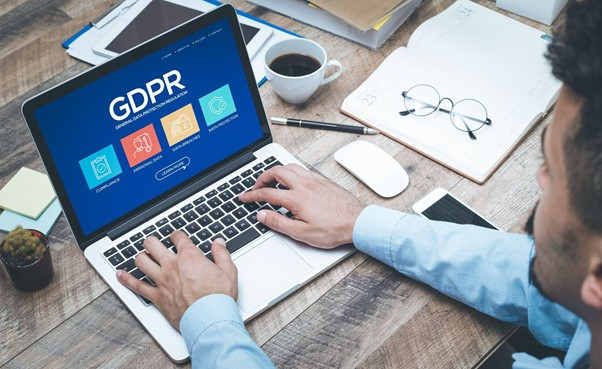
LeadGen App may assist you in remaining GDPR compliant by providing a simple method to explain your goals, connect to privacy policies, and gather opt-in permission. Keep in mind that GDPR restrictions do not apply to all forms. Consent is only required when you request personally identifiable information such as names, emails, addresses, and phone numbers. You may acquire consent from your users using two important form fields. Let's go over the recommended practices to remember for each one:
A) Description Fields- Share your Policies
How do you intend to use the information that others have shared with you? Are you planning to keep it in your database or send it to a third party? To answer these and other inquiries, you must make your privacy policies understandable and accessible.
Add a description box to your GDPR consent form to share this information. You may put rich content, such as photos, links, and structured text, into these areas. Include a link to your privacy policy to provide users with all the information they require about how you intend to use their data.
B) Checkboxes- Use Opt-In not Opt-Out
To obtain opt-in consent from your users, provide a checkbox option on your data collecting form. Checkboxes that are pre-checked should not be used. It is no longer acceptable to pre-select a consent box to provide opt-out consent. GDPR opt-in rules need users to actively provide their consent in order for that consent to be valid.
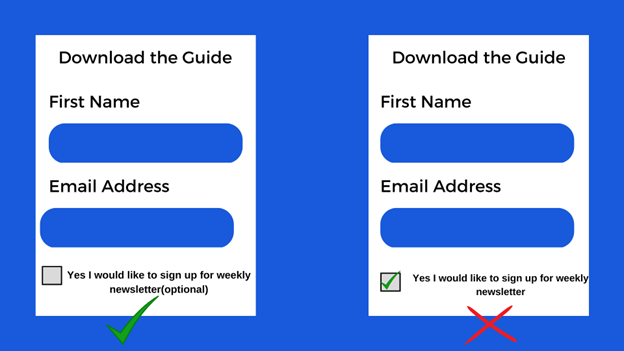
Keep in mind that if you want to use the information for numerous purposes, you must explain each one and obtain explicit approval for each one. If you want to send messages (such as social and retargeting advertisements) to individuals who sign up for your newsletter, for example, you must mention and explain these activities in your form.
How to comply with GDPR?
When new rules are enacted, firms are required to adapt their marketing approach to meet the new requirements. GDPR is no exception. When GDPR was implemented, content marketers all around the world were forced to think creatively in order to avoid appearing invasive. However, there are certain typical GDPR compliance techniques.
A) Personal data should only be processed for particular purposes
Avoid requesting personal information such as your name, home address, IP address, and so on. If you must request them, make it explicit in the form where and why the data will be utilized. Use the information strictly for its intended purpose.
B) Request as few items as possible
Maintain the shortest possible form. Only ask the questions you need to be answered. This will increase your client's trust and eliminate any unwanted ruckus during data collecting. Long forms are also commonly skipped by users.
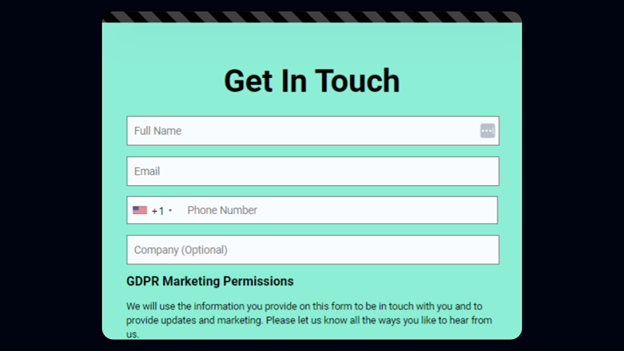
C) Make it simple to withdraw consent
At any point during the procedure, a user may no longer feel comfortable providing their information to you. Under GDPR, they have the complete right to withdraw their permission at any moment. For GDPR compliance, you must make this procedure as simple as possible. If the withdrawal method is difficult to comprehend or is not available in plain sight, a user may be forced to grant consent reluctantly. This will appear to be coercive persuasion.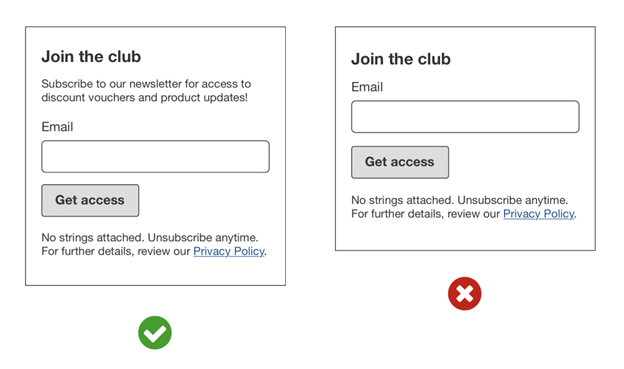
D) Once the process is completed, delete the data
Take additional precautions while dealing with people's sensitive information. Store them with extreme caution and take every step to prevent a security compromise. When the job is finished, erase all the data.
E) Make use of a twofold opt-in technique
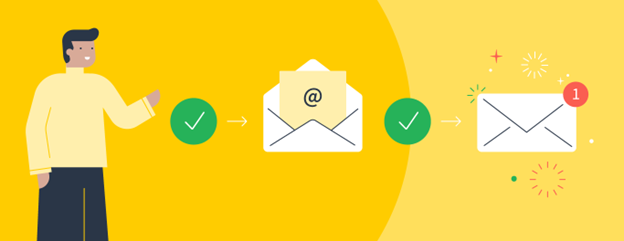
Checkboxes can occasionally slip users' attention. Subscribers may get distracted and accidentally check the checkbox. A double opt-in form can be used to prevent this from happening. When people check the box, they will receive an email. They will only be included if they click on the verification page link supplied through email. In this manner, you may save a lot of unneeded paperwork.
F) Mention whether you intend to share data with a third party
If your application needs you to share the collected data with a third party, make it clear. Ascertain that your users are aware of the cooperation and are at ease with it. You should be prepared to allow users to withdraw at any time during the operation.
G) Clarify the Terms and Conditions
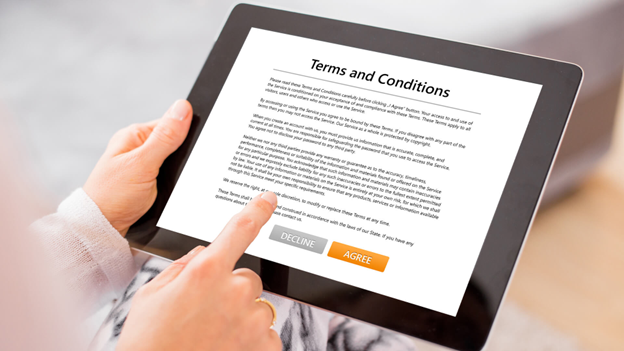
The terms and conditions should be clear and concise in the GDPR permission form. The terms and conditions should provide users with a clear understanding of what they are dealing with. Give them precise facts and avoid using words like may, some, probably, likely, and so on.
Best Practices For Creating GDPR Compliance Forms
You should now have a good understanding of what GDPR is and some pointers on how to make your GDPR consent form more compliant. But there are a few additional things you should be concerned about. These rules apply to more than just your GDPR permission form. You will also require some more smart practices to be GDPR compliant.
1. Incorporate a GDPR checkbox into your consent form
Include a GDPR checkbox at the conclusion of your form. By including a GDPR tick, you will have a more active email list. These are the ones who choose to be here rather than others who are here because they have no other option. The GDPR checkbox can save you time and money by avoiding wasting resources on folks who aren't even interested.
2. Include DPA in your Form
The Data Processing Agreement, or DPA, is a legal instrument that outlines the rights and responsibilities of both the data controller, who supplies the data, and the data processor, who processes that data. DPA is one of the most important regulations to meet if you want to avoid GDPR fines. It must be attached to your GDPR permission form. It is up to you whether you do this physically on paper or over a connection.
3. Store Proof of Consent
Obtaining the subscribers' approval before adding them to your email list is insufficient. You will also need proof of permission. Having documentation of permission on hand will come in helpful in the event of an audit. Send a consent form to any subscribers who were previously enrolled using the GDPR consent form. Particularly if you have users from the EU, EEA, and Switzerland. Simply utilize their IP addresses to make a new section. Send them consent papers and save the consent evidence. For this aim, use multiple opt-in forms. If your form requires permission on numerous fronts, offer a checkbox for each one to obtain express approval. Before they click the Call-To-Action buttons, make sure subscribers are adequately informed.
4. Delete data at the request of the user
GDPR gives users complete control over their data. They have the right to know why their information is required and where it is utilized. They should be able to withdraw consent at any time, without having to make an announcement. If they do, you may remove all of their data. This includes any information you may have disclosed to a third party or sent to a corporation for processing. You must notify all relevant staff and urge them to remove any material.
5. Use a Link Trigger
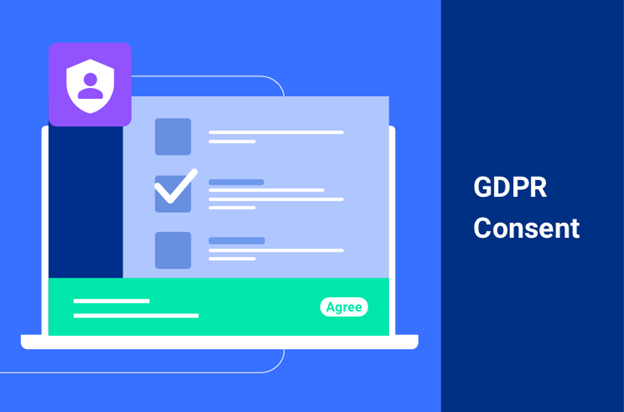
Keeping track of all your subscribers might be difficult if you have a large email list. It will be tough to determine which users granted consent and which did not, especially if you have some already enlisted subscribers. In this scenario, use a link trigger. Users who click on the link will be identifiable and tagged. You may quickly determine which of your users did not click on the link to your GDPR consent page and send them a follow-up email.
6. Check to see whether your checkboxes are marked
Users will pay less attention to the checkbox if it is marked. Some people may even disregard the checkbox entirely. Because a pre-checked checkbox is frequently disregarded. So, while you allow the subscriber to check the box, the remark provides room for error. Some could even call this deception. And if the users lack fair footing, it will not be considered active consent.
7. Skip some Data
Some email service providers do not keep sensitive personal information. While keeping personal data such as name, email address, and so on is permissible with legitimate authorization, sensitive personal data such as ethnicity, religious views, and so on should be avoided. If you must use them for anything like a survey, make them untraceable to the person.
8. Have a Privacy Policy

Your website needs a privacy policy as it specifies how the data will be used, processed, stored, and disclosed. You may link to it and attach it straight to the form. You may also send it by email.
Q/A
Here are some frequently asked questions about GDPR forms:
1. Who needs to fill out a GDPR form?
Any company or organization that collects and processes the personal data of EU citizens is required to comply with the GDPR regulation and may need to fill out a GDPR form.
2. What information is typically included in a GDPR form?
A GDPR form typically includes information about the data being collected, the purpose of the data collection, how the data will be used and stored, and the individual's rights under the GDPR.
3. Is it mandatory to have a GDPR form?
Yes, it is mandatory for companies and organizations that collect and process the personal data of EU citizens to have a GDPR form.
4. How do I ensure my GDPR form is compliant with the regulation?
To ensure your GDPR form is compliant with the regulation, you should review the GDPR requirements and guidelines, and seek legal advice if necessary. It is important to provide clear and accurate information about the data being collected and processed and to ensure individuals' rights under the GDPR are respected.
5. What are the consequences of non-compliance with GDPR?
Non-compliance with GDPR can result in significant fines and legal penalties. The fines can be up to €20 million or 4% of the company's global annual revenue, whichever is greater. Additionally, non-compliance can damage a company's reputation and result in a loss of trust among customers and stakeholders.
Summary
In summary, online forms are utilized in many aspects of life, and many individuals, deliberately or unknowingly, reveal personal information through them. It is critical to understand why this information is being gathered, where it will be utilized, and for what purpose. The data subject has the right to know this information, and GDPR protects such rights.
Working with GDPR-compliant form builders benefits both you and your company. As a result, before designing a form, ensure that it is GDPR compliant. If you want to build forms without worrying about legal issues, you may utilize LeadGen App, which is totally GDPR compliant. If you want to build forms quickly, sign up with LeadGen App and start using it right now!
LeadGen App assists organizations in maintaining GDPR compliance by discovering and correcting particular security flaws affecting the legislation. Businesses and organizations may begin to examine their own GDPR compliance, as well as the compliance of any third parties in their supply chain, by using our pre-built GDPR questionnaire.








